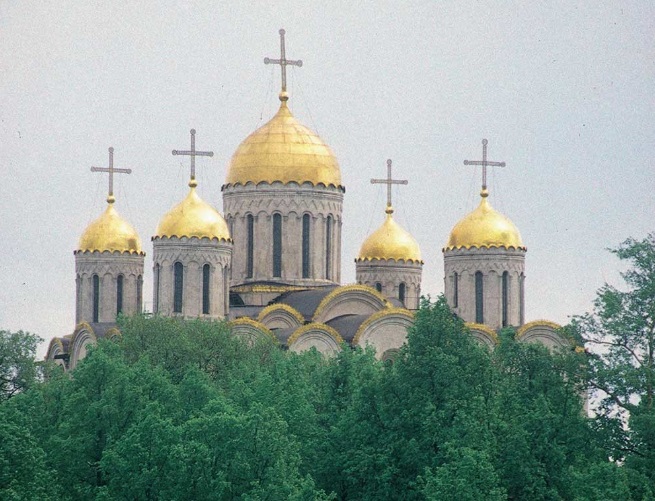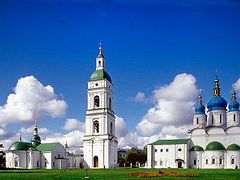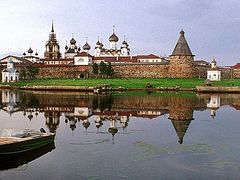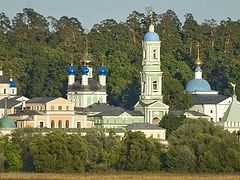Source: Russia Beyond the Headlines
November 3, 2017
One of the great masterpieces of medieval Rus’ survives to this day.
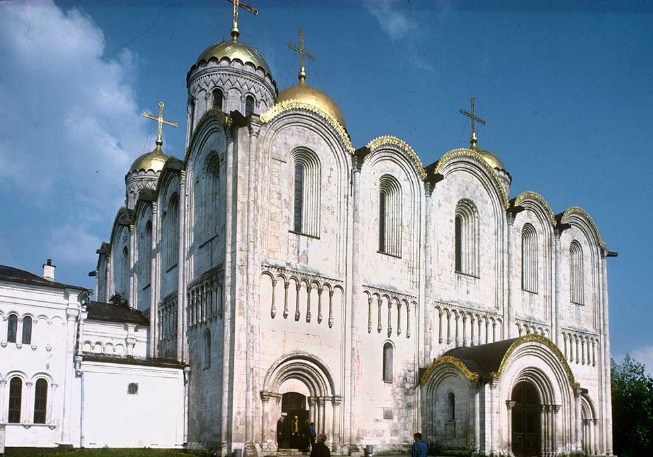 Vladimir. Cathedral of the Dormition of the Mother of God. Northwest view. May 16, 1995. William Brumfield
Vladimir. Cathedral of the Dormition of the Mother of God. Northwest view. May 16, 1995. William Brumfield At the beginning of the 20th century the Russian chemist and photographer Sergei Prokudin-Gorsky invented a complex process for vivid, detailed color photography (see box text below). His vision of photography as a form of education and enlightenment was demonstrated with special clarity through his photographs of medieval architecture in historic settlements northeast of Moscow, including Suzdal and Vladimir, which he visited in the summer of 1911.
Among his several views of the town are two photographs of the monumental Dormition Cathedral: a distant view from the east and a view from the northwest. My photographic work in Vladimir, including the Dormition Cathedral, spans a period from 1972 to 2009.
The fortress of Vladimir was established in 1108 on the Klyazma River by Vladimir Monomakh, who ruled as Grand Prince in Kiev from 1113 to 1125. Under his guidance, Vladimir and the surrounding settlements became a center of political and economic power in the lands of the eastern Slavs. Under Monomakh’s descendants in the second half of the 12th century, the Vladimir area witnessed a surge in church construction with a form of limestone known as white stone.
Medieval Masterpiece
The most important of these temples was the Cathedral of the Dormition of the Mother of God (Assumption), begun in 1158 by Prince Andrei Bogoliubsky. The plan of the Dormition Cathedral conformed to the elongated plan with a dome in the center typical of large churches in Kiev and Novgorod during the same period. The stone facades displayed a few high-relief carvings.
The source of such skilled technical work remains unclear. The Laurentian chronicle mentions the bringing of masters from "all lands," and there are later references to Nemtsi, or "Germans"— a term broadly used for foreigners. It has been proposed that the artisans were sent to Bogoliubsky by Frederick Barbarossa. If certain features of the Vladimir churches — such as the portals and decorative stonework — suggest a Western Romanesque presence, the basic plan remained in the tradition of Byzantine church architecture as adapted in early medieval Rus.
...Read the rest at Russia Beyond the Headlines.

